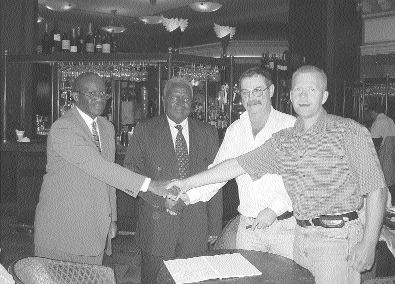Vancouver —
After visiting the site in July 2004, Roscoe Postle Associates recommended further exploration.
Uganda Gold wants to confirm the existing resources and outline possible extensions before exploring other known deposits, while doing metallurgical tests on samples from the mine and tailings.
“We have received all the approvals from the government,” says Uganda Gold President Al Beaton. “Half of the remaining orebody can be mined by open-pit methods as long as care is taken to protect the environment.” (Kilembe is in the foothills of the Rwenzori Mountains, between two national parks.)
Among Kilembe’s former owners is Falconbridge (fl-t), which produced more than 16 million tonnes grading 1.98% copper and 0.17% cobalt between 1956 and 1977. In 1979, the resource was estimated at 4.1 million tonnes grading 1.77% copper in what is equivalent to today’s measured and indicated category. Uganda Gold thinks there is considerable potential for expansion.
Kilembe was developed to produce copper and cobalt; however, the cobalt circuit was abandoned in the late 1950s as a result of low cobalt prices and initial problems with recovery. Another company is now recovering cobalt from the stockpile of pyrite-cobalt concentrate.
Although cobalt assays were not conducted after the late 1950s, the average head grade was 0.17% cobalt over the life of the mine.
Civil unrest in Uganda induced Falco to relinquish its ownership of the mine. Kilembe was mined sporadically until 1982, when high inflation and lack of supplies forced its closure.
The most recent resource estimate (1997) used a geostatistical block model and outlined an in situ resource of 3.1 million tonnes grading 0.18% cobalt and 0.97% copper in the Lower Bukangama and Eastern zones.
The deposit is structurally complex. Rocks underwent several stages of folding and are cut by major shear zones and basic dykes that separate the orebodies.
The mineralization comprises disseminated-to-massive sulphides, with up to 15% sulphides. Chalcopyrite is the main copper mineral. Cobalt and other metals are usually associated with pyrite.
The deal also includes three tailings dams, which contain 5.2 million tonnes grading 0.12% cobalt and 0.18% copper in historical resources.


Be the first to comment on "Uganda Gold buys into Kilembe mine"